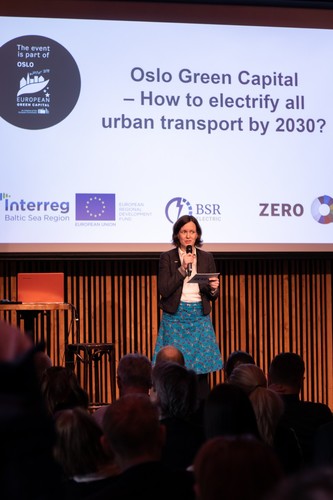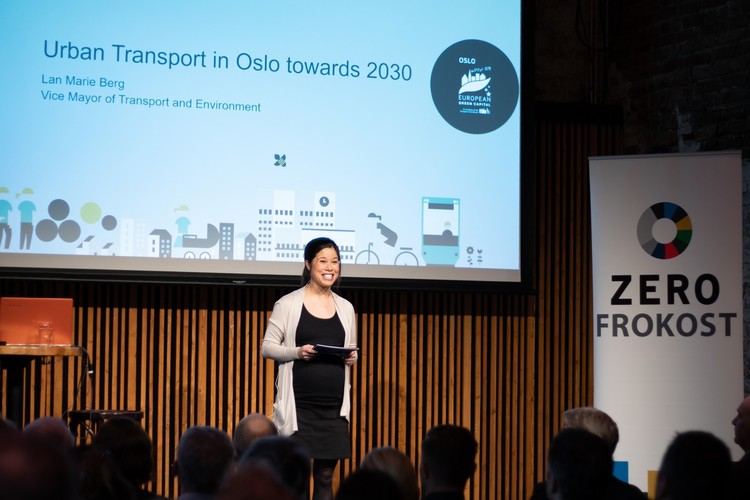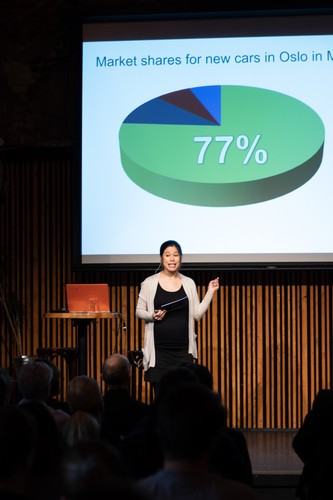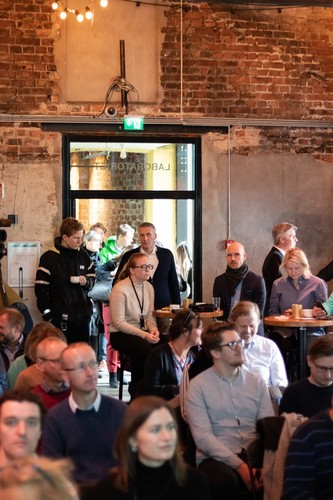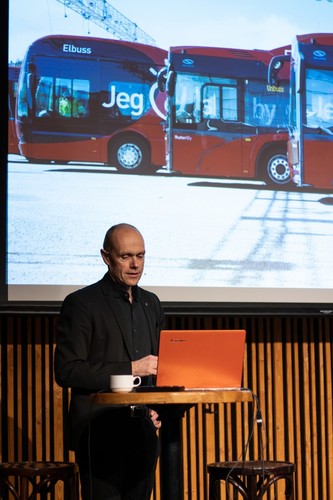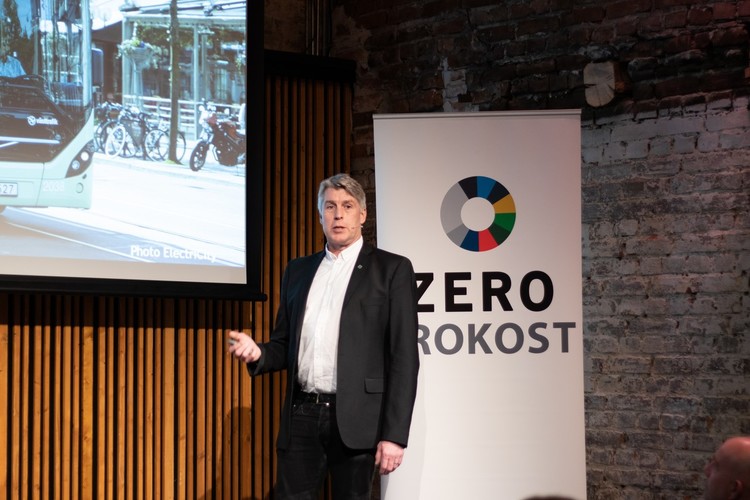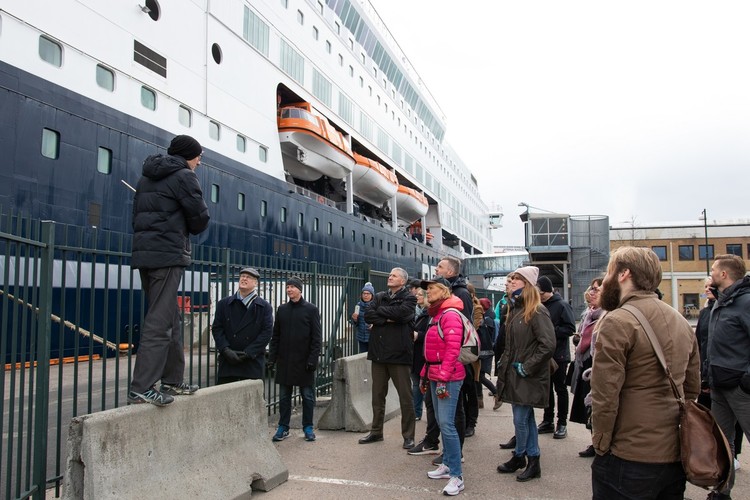Capacity Building Seminar Oslo: Oslo Green Capital – How to electrify all urban transport by 2030?
In this breakfast capacity building seminar we presented inspiring electrification projects, electric vehicle news and outlined the next steps towards a completely emission free transport sector that will help provide healthy, green cities and minimize the urban climate footprint.
During the two hour seminar, there were 10 very interesting presentations held. Here are the main findings:
1) How will the City of Oslo work to electrify all urban transport by 2030?
By Lan Marie Nguyen Berg, Vice Mayor for Environment and Transport (Green Party), The City of Oslo
- Oslo European Green Capital 2019. Part of the reason for getting the nomination was measures to reduce the emissions in transport sector.
- 2 weeks ago announced that Oslo emissions went down 9% last 2 years, from biofuels, electrification and reduced traffic.
- Targets mean they need 0% emissions from transport by 2030. This target in actually in line with the Paris agreement.
- Cities make 70% of the worlds emission, solutions in cities can be transferred to other cities.
- March 2019 is recorded the breaking month for e-vehicles: 77% new sale of private cars in Oslo were electric. That was partly because of the arrival of the Tesla model 3.
- National target in 2025: All car sales are electric.
- Electrifying the transport sector can only be achieved with the society, businesses and people.
- It does take time to replace the old combustion engine car fleet in Oslo.
- National incentives makes it cheaper to buy electric and more expensive to buy fossil cars. 1300 public car chargers in Oslo which are free. Introducing a small fee, to make people move their cars.
- We need more public chargers. City government has built about 200 per year but now upgrading to 600 per year. Now the city has a scheme to support charging at home in apartment buildings.
- Now turning eye to zero emission taxis and vans. Building fast chargers. The world’s first wireless fast charging for electric taxis will be established and the construction site for renovating that street will be the world’s first zero emission construction site.
- Oslo has a green procurement strategy to demand zero emission technology. They require contractors to build zero emission construction sites if available. Oslo has first electric excavator, 25 tonnes.
- Now electrifying the ferry to Nesodden, and getting 76 new electric busses.
- In 2030 Oslo wants to become a zero emission port. By 2030 the port shall reduce emissions by 85%.
- Shift of transit modes. Reducing car traffic is an important part of reducing emissions. There are more alternatives to car. This was controversial at first but now that people see how it is, they like it. Want to make Oslo a bike-friendly city. Quadrupled investment in biking.
- Green policies work. More than ever people use public transport, use electric vehicles, climate emissions are going down, air is cleaner.
2) Electric buses in Oslo: 76 ebuses by summer 2019 – all zero emission by 2028
By Snorre Lægran, Planning Director, Ruter
- Ruter plan, coordinate, order and market all public transport. Last year they had 387 million boardings, i.e. 4.2% growth.
- They aim to meet peoples' expectations. Cars are getting electric, bikes are getting electric. Now buses too.
- 43% of all public transport are buses. The target is to become emission-free by 2028.
- Electric status: E-bus test started end of 2017, in which 70 e-buses were phsaed in to the existing Oslo service contracts. 39 e-buses to follow in the new Romerike contract.
- We have to listen, have to test, have to fail and have to learn.
- Feedback from the operators: Challenges in shifting technology. Bus operators have technological difficulty, but fewer now. New routines, change of work pattern. Problems related to prototype etc. But working on it.
- Lessons learned: the market has matured.
- Demanding to establish fast charging infrastructure. There are many players, good collaboration, but it takes time.
- In 2019 Ruter will expand by 115 electric buses to remain focused to get emission-free by 2028.
3) Electric urban ferry from Oslo to Nesodden in 2019
By Jarle Myrbø, Operations Inspector, Norled
- One of the countries largest ferry operators, operating 80 vessels daily, with 20 vessels under construction. All of them are zero emission.
- In Oslo they have 3 vessels, operating for Ruter. The three vessels carry close to 3 million people annually. They have decided to replace the gas system with a battery system, and will replace the engine room with a heating/cooling system (not completed yet).
- HVAC (heating, ventilation, and air conditioning) with energy from seawater. It will be quite quiet in the passenger crew area.
- APS charger at Aker Brygge that needs 4MV, 4200Amp to charge.
4) Charging infrastructure for electric passenger ferries in the Oslo Fjord
By Atle Holth, Director of Energy Infrastructure, Ruter.
- Leading Ruter’s transition to zero emission on the water started one year ago.
- The ferry to Nesodden will go electric in September 2019. The other ferry will go electric in 2021, and infrastructure for charing is built at Aker brygge, taking power from Akershus festing (see above presentation 3 as well). * The owner of the area is the port of Oslo. They have a good cooperation with them. The main problem is to find space for the infrastructre and the port is one of the most popular places in Norway, the traffic is big. There's a lot of regulations and rules. 15 different potential locations in the area were suggested for the infrastructure and a lot of negoatiations were held, until just last week they signed the contract last week. Construction works starting now/soon.
- Also this has a couple of other challenges: the building used to be offices with low roofs. But now big heavy equipmentis needed for renovation. And May, June and July is the most busy time of the year for ferry transport. No passengers will be allowed to walk on pier 4 during the building
period, which makes logistics a lot more complicated. Also it was important to have the charging system and the net station as close as
possible to the ferry. - Close cooperation, dialogue and openmindesness helped us to come this far.
5) Bigger electric vans available in volum today will speed up emission-free urban freight in Oslo
By Espen Kristoffersen, Brand manager MAXUS, RSA .
- SAIC Company is the mother company of Maxus, from Shanghai.
- End of last year MAXUS came to Norway through RSA which is an import group.
- They are selling the large electric MAXUS van that can go up to 200 km on an electric engine with fast charging capabilities (fully charged in 2 hours).
- They also have pick-up trucks that are very popular as municipality vehicles that are tow bar compatible and can take 1250 kilos. They also offer niche production options for cities, e.g. smaller vans, 9-seaters for taxis etc., and also post vans. The Post is now testing 3 vehicles. They can do two routes/three shifts per day on one charge.
*The Total Cost of Ownership (TCO) is better than that for a regular fossil van. It is more expensive to purchase, but the running costs and toll costs are much less. - Key factors to increase EV adaption: - still favourable registration tax compared to fossil vehicles; - accessibility (priority to use bus lanes for E-LCV); - continued favourable toll rates; - priority parking and charging E-LCV in urban areas; - allow electric vans to have access to city centre.
6) BYD electric light and heavy commercial vehicles to be launched in Oslo soon
By Erik Bergboer, European Sales Director E-Trucks, BYD Europe B.V.
- BYD Electric Vehicle Program for Europe. Facts: 35 industrial parks worldwide; 6 core businesses: IT, New Energy, Automobile, Rail transit, Forklifts, Trucks; over 240 000 employees.
- New construction machinery - forklifts etc. are being built electric.
- The first e-vehicle truck is coming to Europe in November 2019 with a range of 220km and a fast charging time of 1.5 hours. Fully equipped to all European standards.
- The next BYD truck coming to Europe is a truck (looks like a fruit truck) that has a 240km range with 1.3hours charging time - and 2 charging options. There will also be a variety of other options, also in construction vehicles, to come.
- he pointed out that government subsidies are not mandatory, but it helps. More importantly: Give advantages to electric vehicles.
7) Electric cargo bikes and e-vans for city logistics in Oslo
By Lars Sveen, Head of Land Transport domestic Norway, Schenker.
- City logistic terminal will open on the 8th of May in the city centre of Oslo. From there they will deliver 80% of their goods with zero emission vehicles. They have a goal for 100% zero emission by the end of this year or next. This is in cooperation with the deliverers of goods. Will start with electric vehicles and bikes. This will save an estimated 100 000 litres of diesel each year. Hoping for zero emission by 2028/29.
- New bikes can also take deliveries. Very efficient, but have to stop a lot for tourist photos. Hard to get hold of drivers these days, but there are many electric van drivers suddenly - they prefer driving electric because it is zero emission and more comfortable.
- With bikes you need to have a depot and use platforms to unload containers and then take them elsewhere.
- To also focus on charging and loading opportunities will speed up the buying of bigger electrical vehicles.
8) What can Oslo learn from the Swedish ElectriCity? Electric buses, trucks and ferries in Gothenburg
By Peter Lindgren, Coordinator ElectriCity, City of Gothenburg. Partner in the BSR electric project
- Started in 2013 developing an e-bus, by 2015 the e-bus was running on Line 55. the buses and chargers work well all year round and in all weather conditions. The noise from the buses is greatly reduced, as well as the local emissions.
- Need to charge the bus in the morning and night at the main station
- A new e-bus system around the city is planned for 2035.
- They also have partly automated buses, where the automated systems support the bus driver. E.g. the driver can drop the bus off and it drives itself to its station. These functions will be tested on city roads.
- What will this mean for the city / Urban development? The city is looking at how electric buses and other heavy vehicles can transform the
city. This is part of a new development in Gothenburg. Here the automated functions and safety systems are key factors. The buses are also geofenced for speed and driveline adherence. - Electric trucks: Volvo has delivered two electric trucks, which are running as garbage truck and delivery truck. These are still being tested, they have different charging strategies. A super high power charger is built to support the trucks. The city is further looking at the requirement of charging infrastructure.
- Electric boats: Marine demo area: a passenger ferry "Alvsnabben 4" will be rebuilt to hold an electric engine. The charging infrastructure will be developed. And an environmental and noise study of ferries is planned.
- Electric worksites: Working with Volvo, where new electric working machines for building sites are developed. These will be tested at work sites in the city. The engine is quiet and eliminates more local pollution. New battery or wired power systems will be tested. Electric supply must be adapted for electric worksites.
- Conclusion: electrification is a big part of the solution, cooperation is key, we must learn form each other. Welcome to come visit us in Gothenburg!
9) We use electric excavators in Oslo – but how to cut all fossil energy use from construction sites by 2030?
By Hege Schøyen Dillner, Chief Sustainability Officer/Group Executive Vice President at Veidekke ASA.
- Recommends the book: "From the Stockholder to the Stakeholder: How sustainability can drive financial outperformance"
- Veidekke ASA represents the biggest land-based construction sector in Norway with a big carbon footprint.
- Up until now, the building sector has not been built with fossil-free construction sites. But the future will be different. If they will succeed they need to be clear in their requirements from subcontractors, and need access to better electric machinery. They need clients with stricter requirements for emission-free construction.
- One month before the Paris agreement they committed to reducing emissions. But it doesn't help much to have a fossil-free construction site if the products being transported there are made in a bad way and transported there in a bad, fossil way. That's why, Veidekke use low temperature asphalt with wood pellets to cut emissions. In terms of material transportation and logistics, this becomes a big thing.
- In Norway they have a lot of incentives for electric cars, but she dreams of more incentives for electric machinery in construction.
- In January 2019 the first electric excavator was taken into action and it was very expensive. It is an exemption, where she hopes more such vehicles will come, because the lack of heavy machinery products hinder them from going from fossil to electric.
- Have had some fully electric machinery which have been great and have invested in almost 100 electric vans. They also have a hybrid rig.
Also, they are using totally new gravel which they designed from the beginning and made it 100% electric. Seeing thatclients are starting to demand this, it will be a competitive advantage. - We always talk about where should we invest? Where will the market go? It’s towards sustainability. Aiming for more and more fossil-free construction sites is expensive to do now, but the more you do it the less expensive it gets.
- Road Map: 38 of the largest construction companies have signed to agree to work towards a fossil-free working environment. A lot of banks and funds say its too big of a risk to invest in non-sustainable assets. So to be transparent about sustainability is prosperous also on financial terms.
- Main idea: we need clients to demand zero emission construction. It is market driven, stop choosing the cheapest option, which is often fossil. Also to get access to better and cheaper electric machinery will be beneficial.
In our Materials section, you will find the powerpoint presentations if you would like to gain more insight.
More pictures taken at the event can be found on our partner ZERO's flickr account.
Also, the event was streamed on Facebook.
Thanks go to Caroline from ZERO for the capturing the event so well. All credit for the pictures during this event are thus attributed to ZERO/Caroline Dokken Wendelborg.

Jenny Skagestad
ZERO - Zero Emission Resource Organisation
Youngstorget 1, 0181 Oslo, Norway
Phone: +47 92 61 09 95
jenny.skagestad@zero.no



